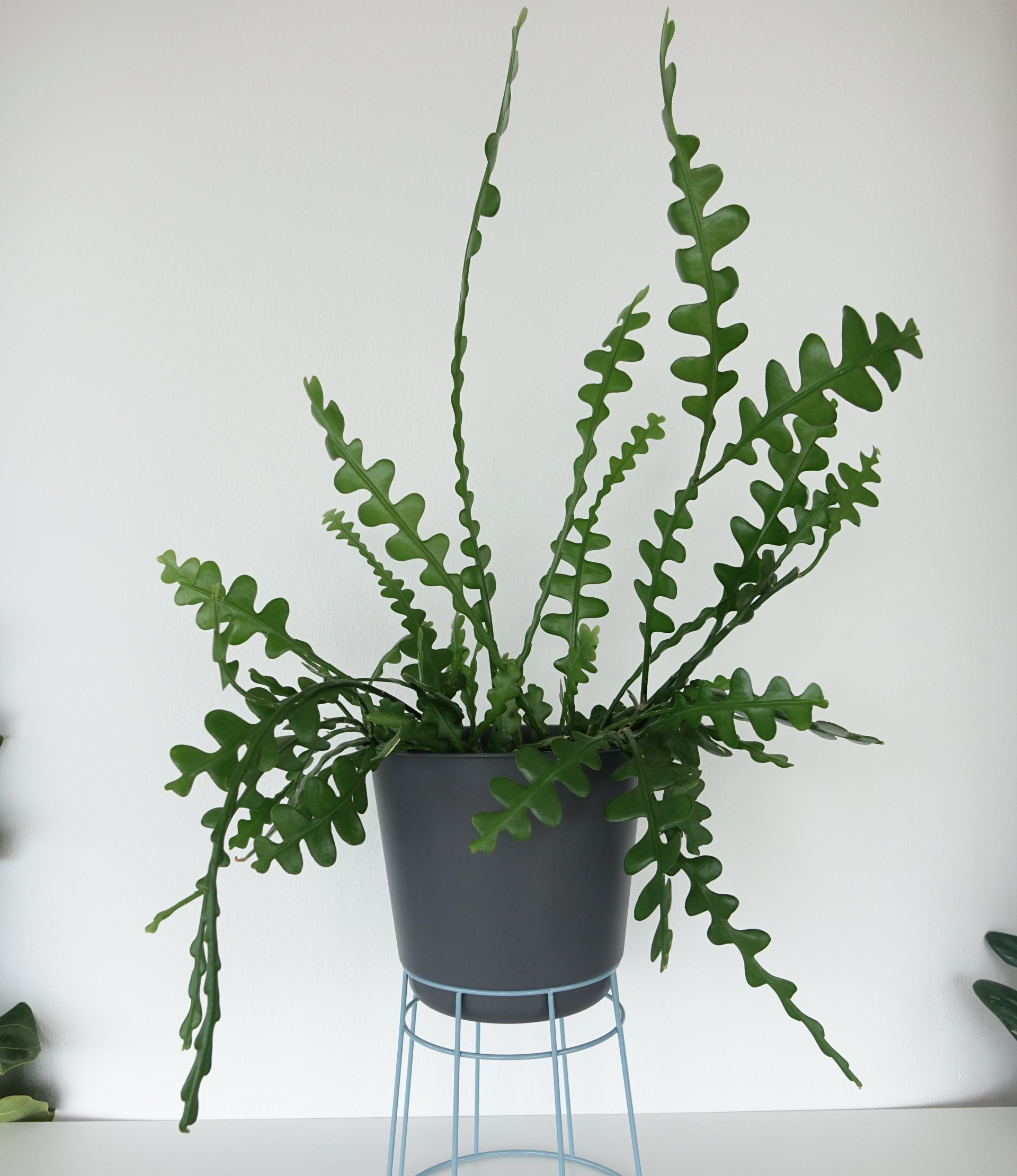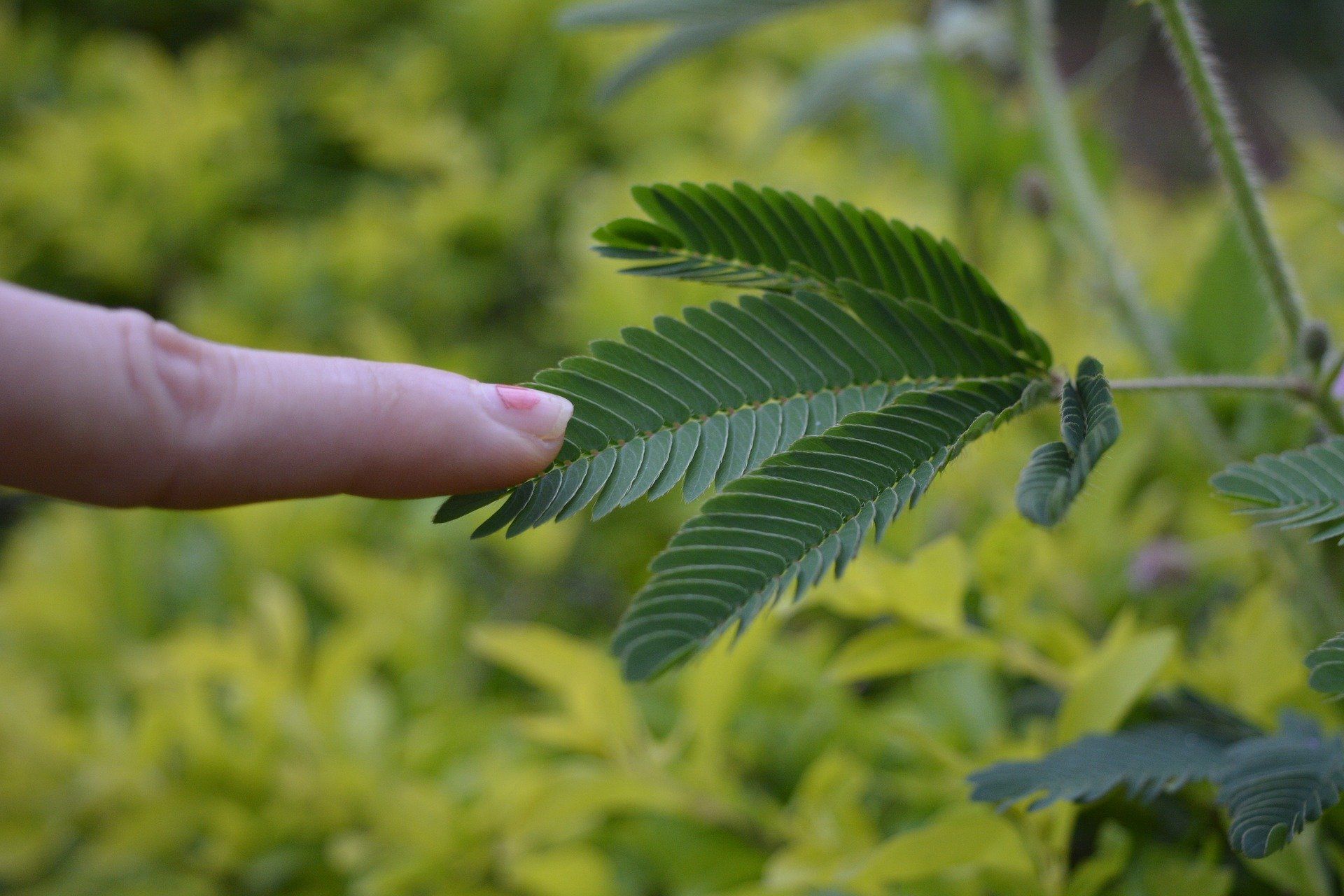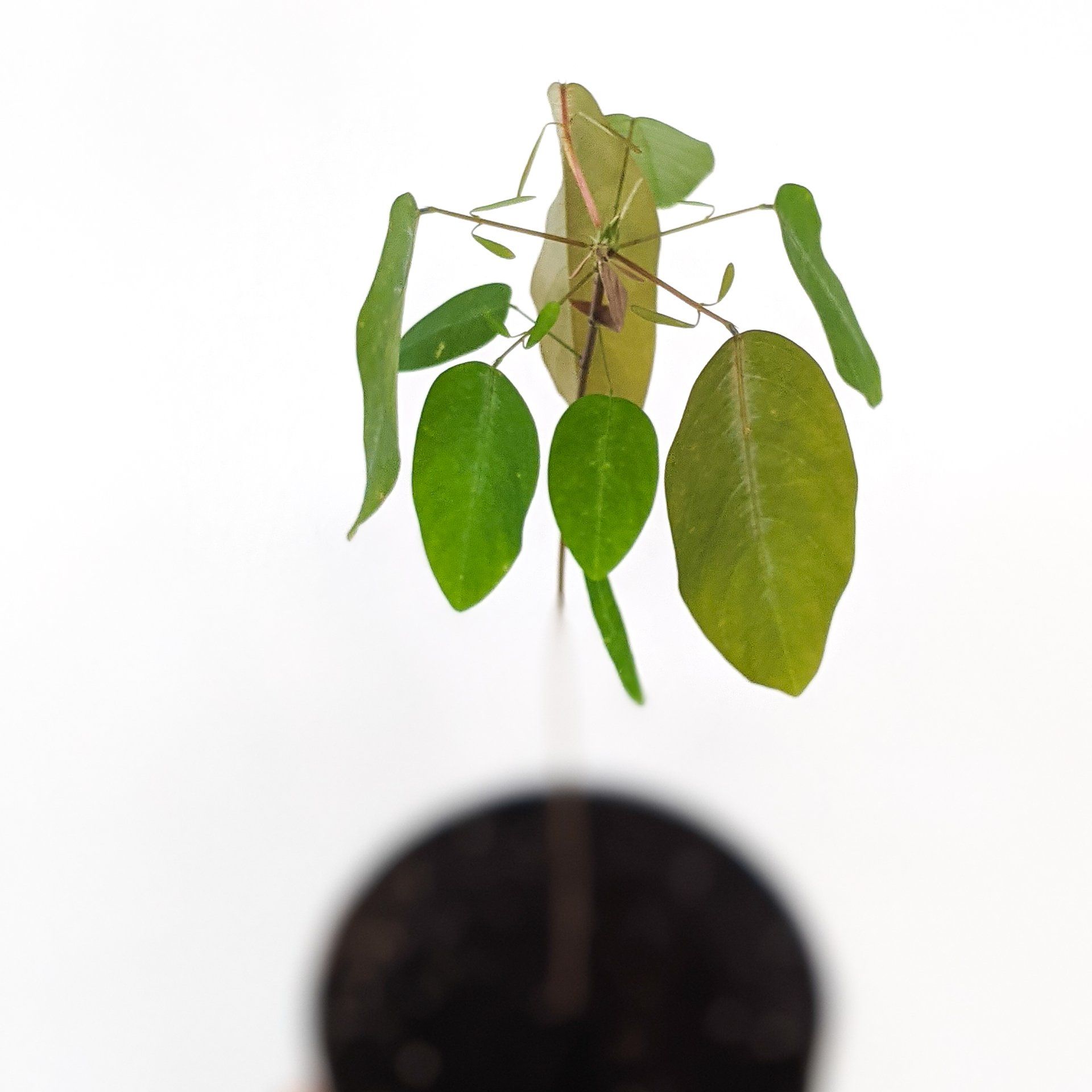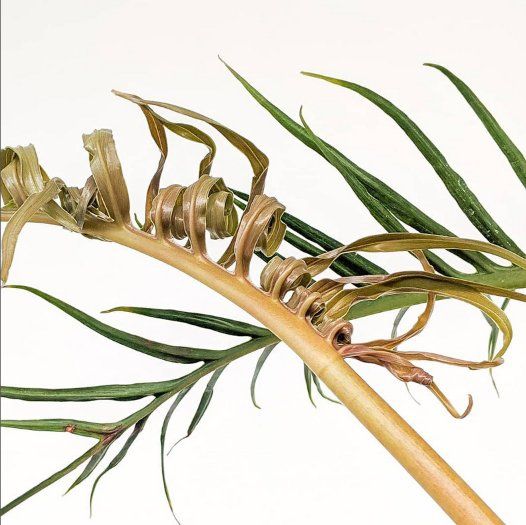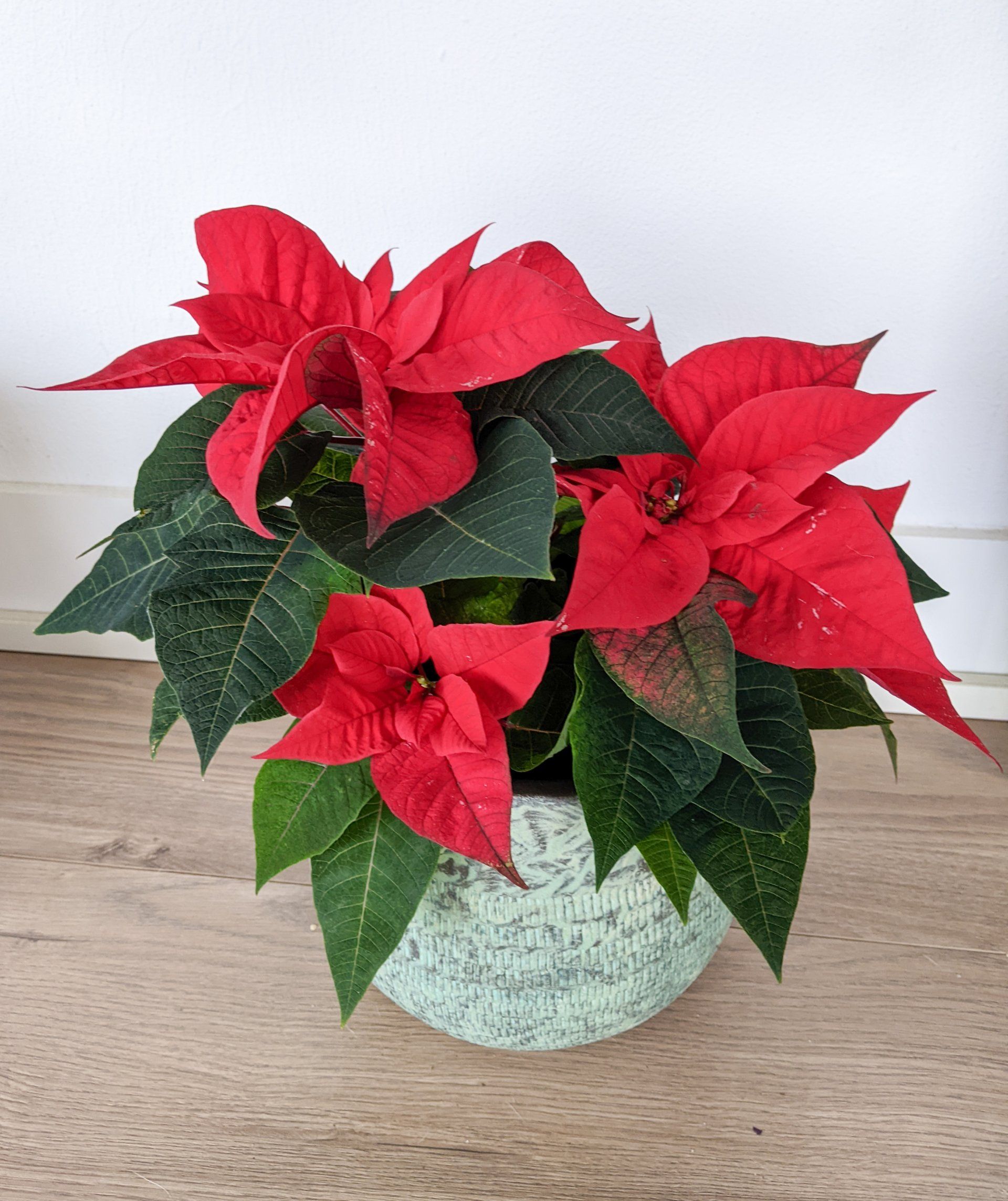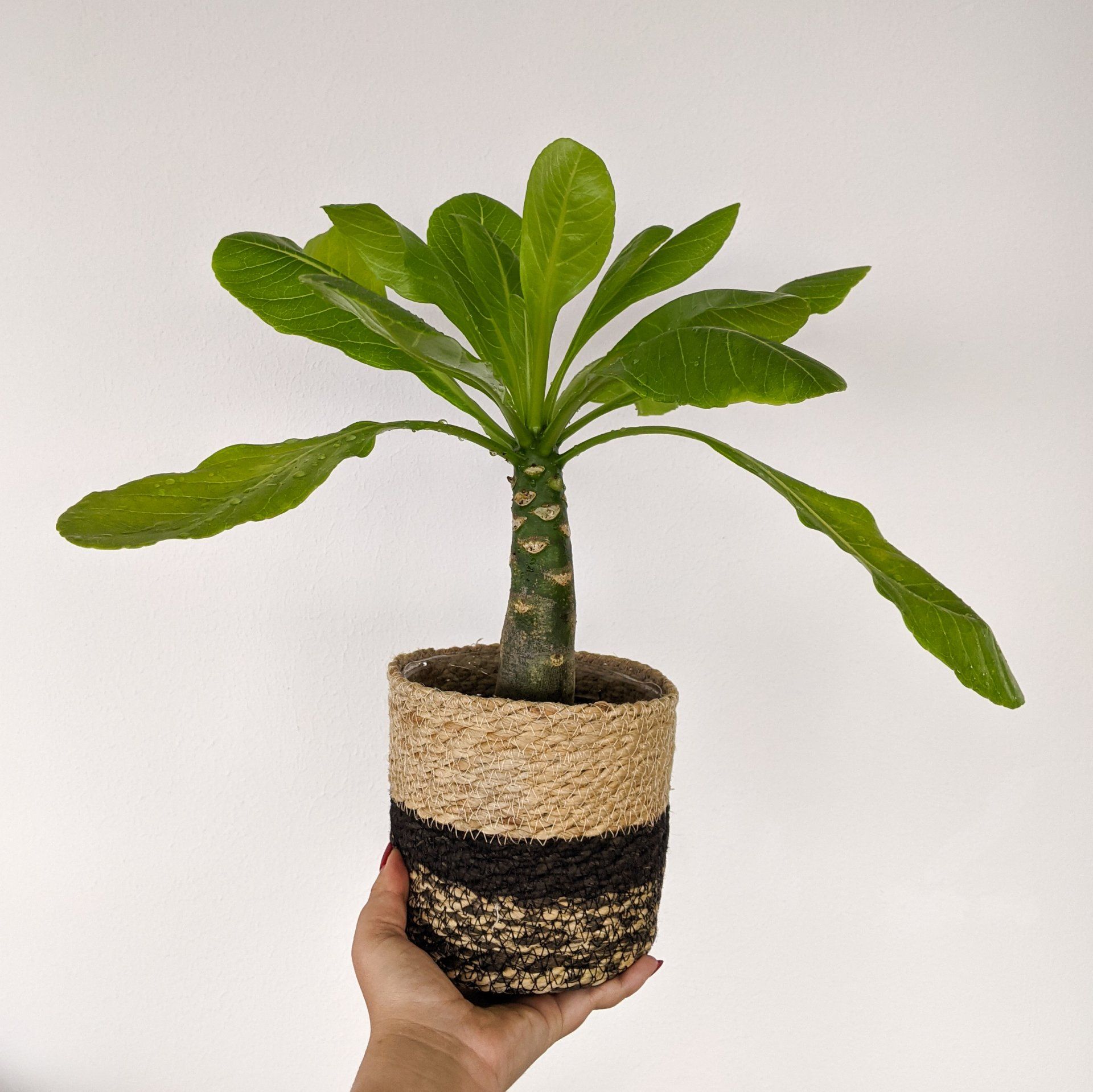555-555-5555
mijnmail@mailservice.com
Carnivorous plants
This article appeared (in a shortened version) in Gardeners' World (November 2020). Download that article (Dutch!) or read the more extensive version below with additional images and explanations about plant flexitarians and care.
Thanks to...
Araflora, for the two beautiful Venus Fly Traps that can be seen in my photos. Araflora has a very wide range of all kinds of carnivorous plants. Araflora is a fan of special, weird plants, just like me. So take a look at their website or follow them on instagram!
Colleague Marlijn: as an omniscient biologist, she showed me the tiny sundew in the nature area "Hatertse vennen" in Nijmegen, Netherlands. She is also the one who came up with the fact about Bladderwort, below the video ...
Hortus Leiden and
Rogier van Vugt, for my introduction to vegetarian carnivorous plants.
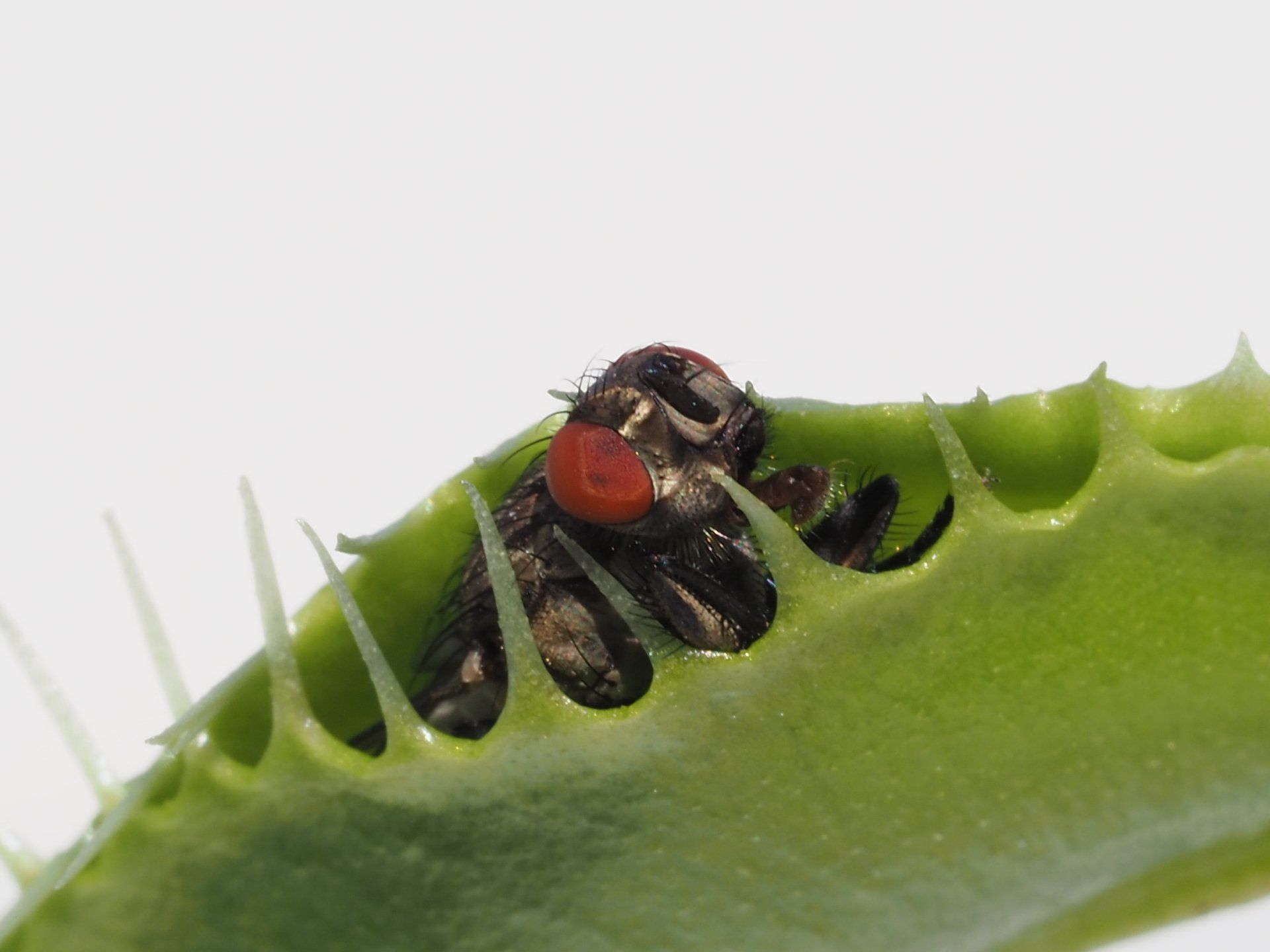
If you think that plants are peaceful organisms, patiently watching what is going on around them, you are wrong. Plants smell, see and feel in their own way and respond to their environment. I took an online course on the biological mechanisms behind this and became fascinated by some members of the carnivorous plant family.
Venus Flytrap
By far the best-known carnivorous plant is the Venus flytrap,
Dionaea muscipula. With its closing traps, this is one of the most special of the bunch. How does the plant know it has to close a trap? And why doesn't the trap close when, for example, a leaf falls on it?
If you look closely, you will see a number of thin protrusions in the trap, which are sensory hairs. When a hair is touched, the plant receives a signal but does not close yet. The plant "remembers" that a hair has been touched. If a second hair is touched within 20 seconds, the trap will close. That means that an animal is trapped. Is it taking too long for the second hair to be touched? Then the animal is too small, or it is a leaf or twig. The plant 'forgets' the first touch. Is it being touched too quickly? Then it is probably too big an animal for the fall and it does not close.
That's not all: if the trap actually has a bug, that bug will try to wriggle free. These movements are also registered by the plant: the trap closes tighter. The fly awaits a slow death. The one time I managed to feed a live fly to my fly trap, I saw it move for hours. I felt so guilty ...
Feeding a dead fly to a fly trap does not work: the plant does not feel any movement and will open its trap again after a few hours. Although it is beautiful to see, it is useful to know that a trap can only close about four times: after that the leaf dies. This is because closing it takes a lot of energy.
Mechanism
So how does it work? How does the plant 'remember' that first touch? That is because of an electric charge that is generated when touched. This charge 'runs' over the membranes of the cells, making it release calcium ions. When the amount of calcium ions exceeds a treshold, the trap closes. The first touch will not generate enough: a second touch is needed to get more electric charge and so enough calcium ions. However, the electric charge dissipates over time, so if it takes too long for a second touch, the trap will not close.
I learned all this during the (free) online course from Prof. Daniel Chamovitz called 'Understanding plants', available at
Coursera. I found this course very interesting and I can highly recommend it if plant mechanisms like these interest you!
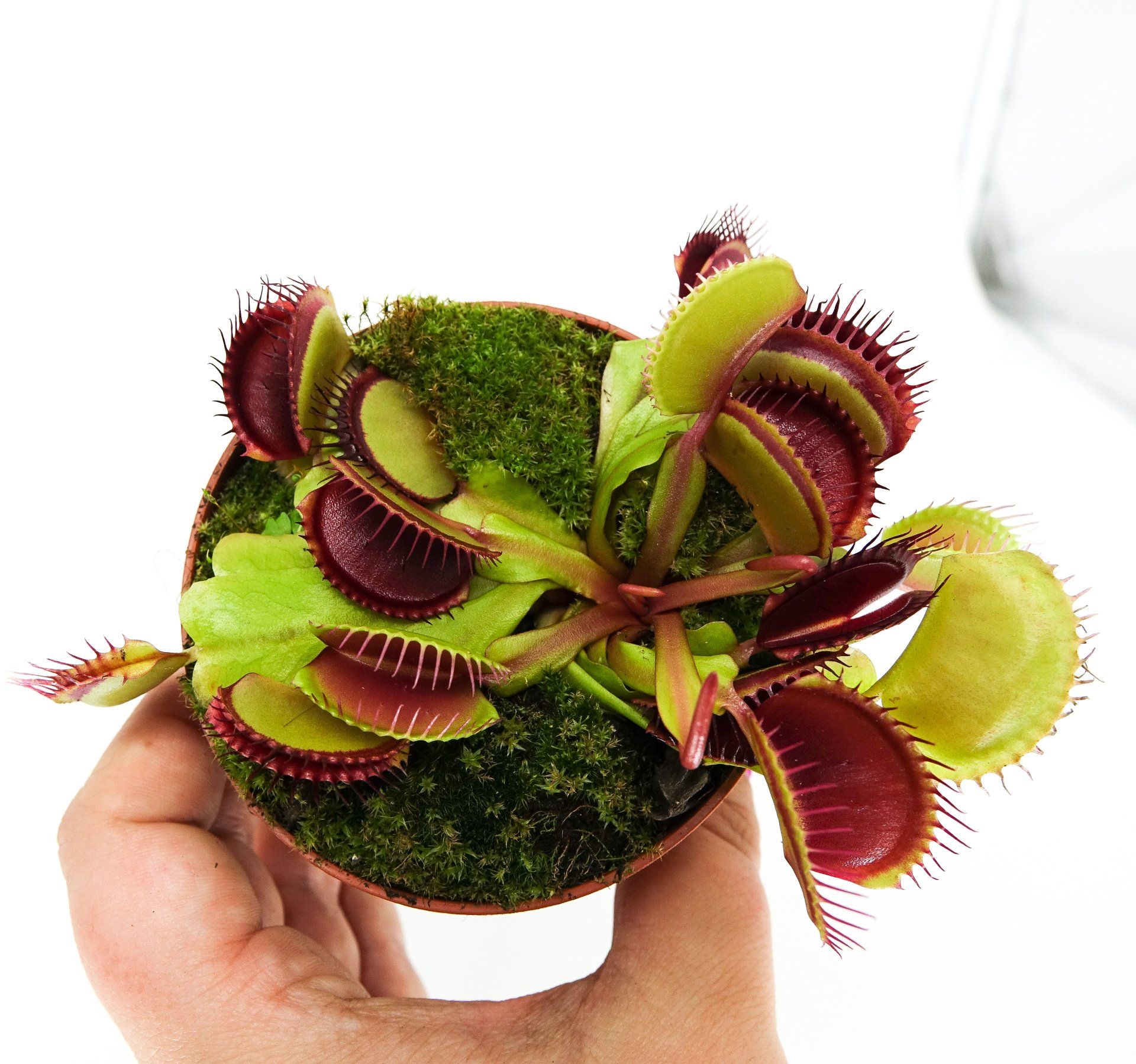
Titel dia
Schrijf uw onderschrift hierKnop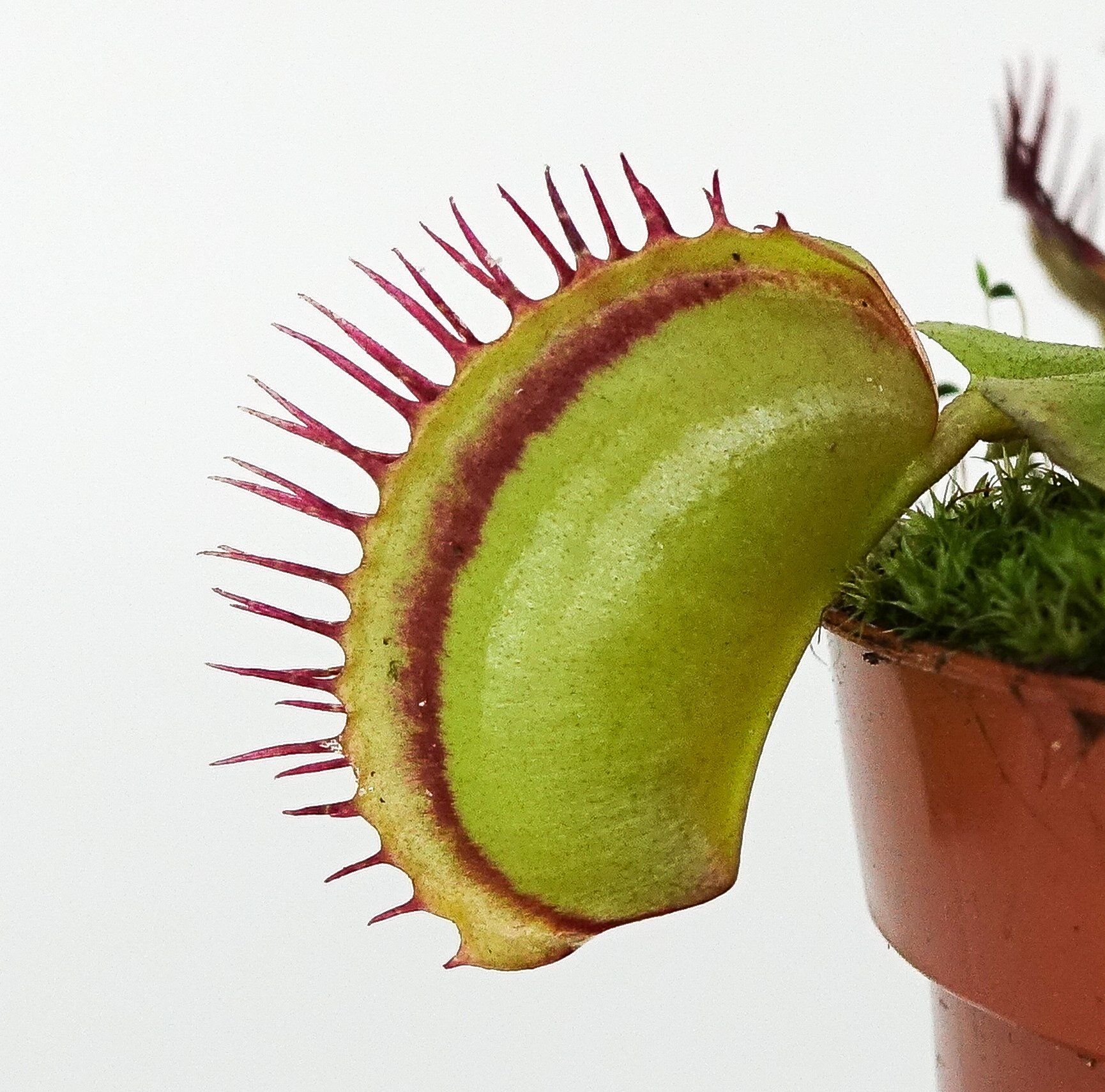
Titel dia
Schrijf uw onderschrift hierKnop
Titel dia
Schrijf uw onderschrift hierKnop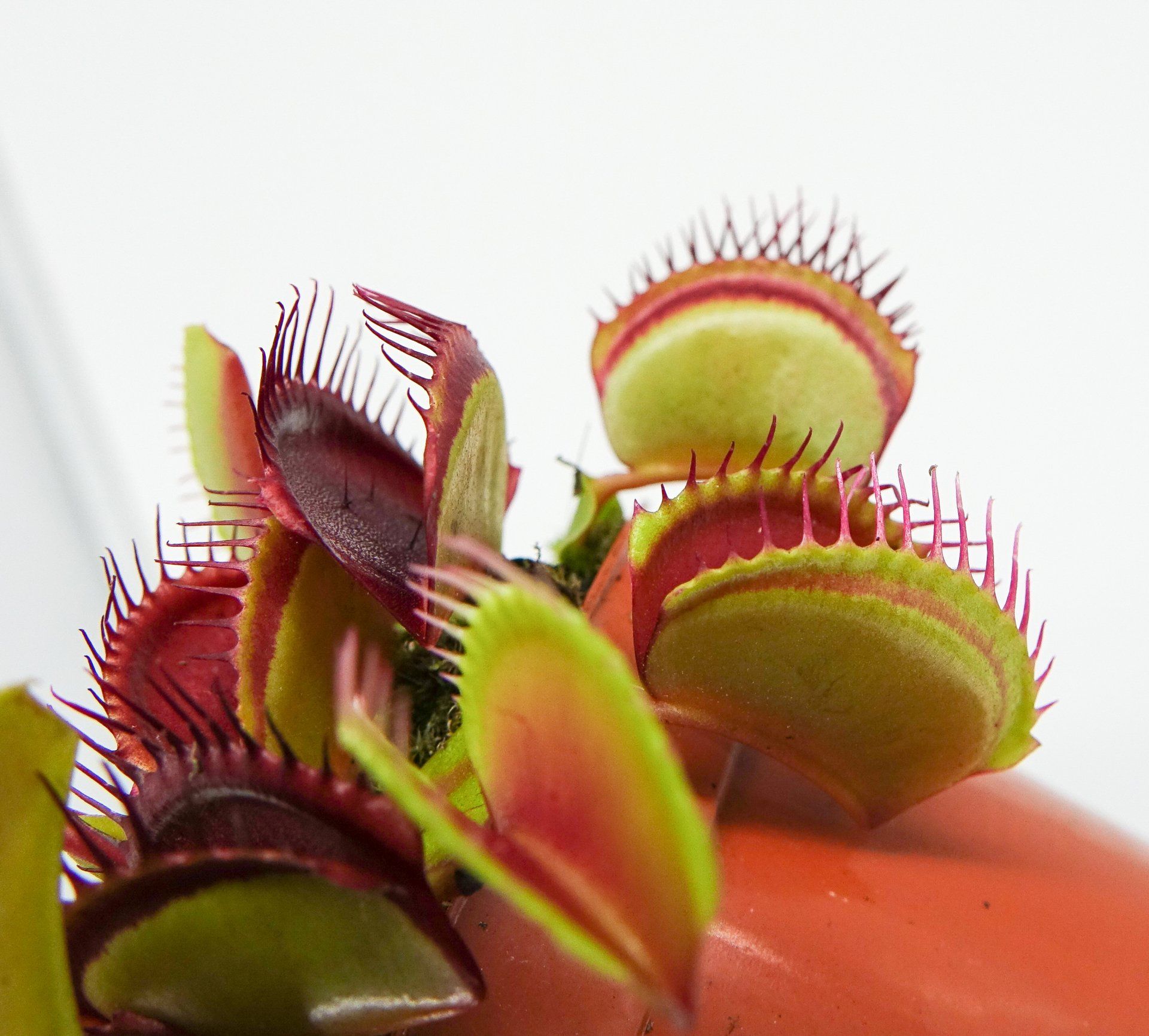
Titel dia
Schrijf uw onderschrift hierKnop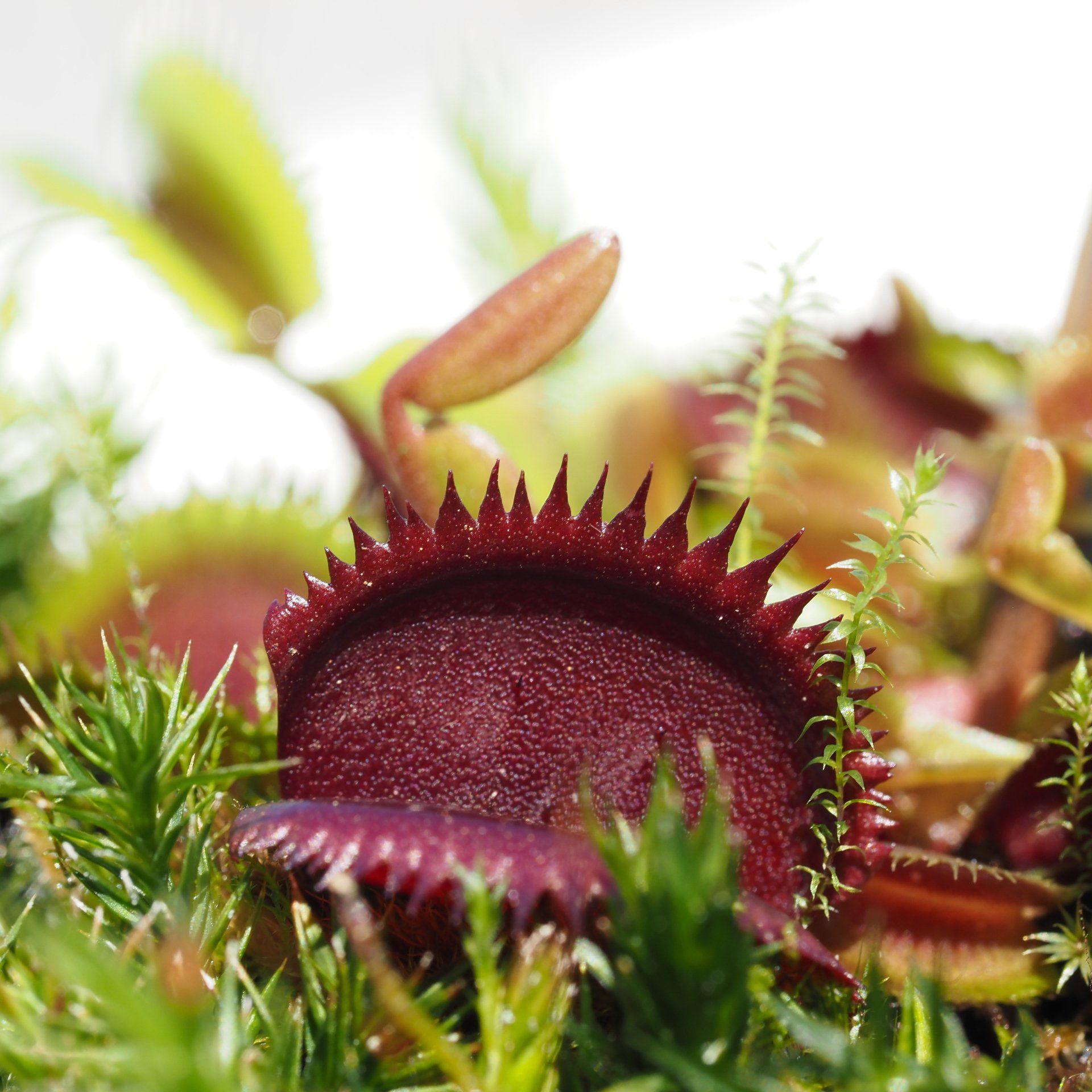
Titel dia
Schrijf uw onderschrift hierKnop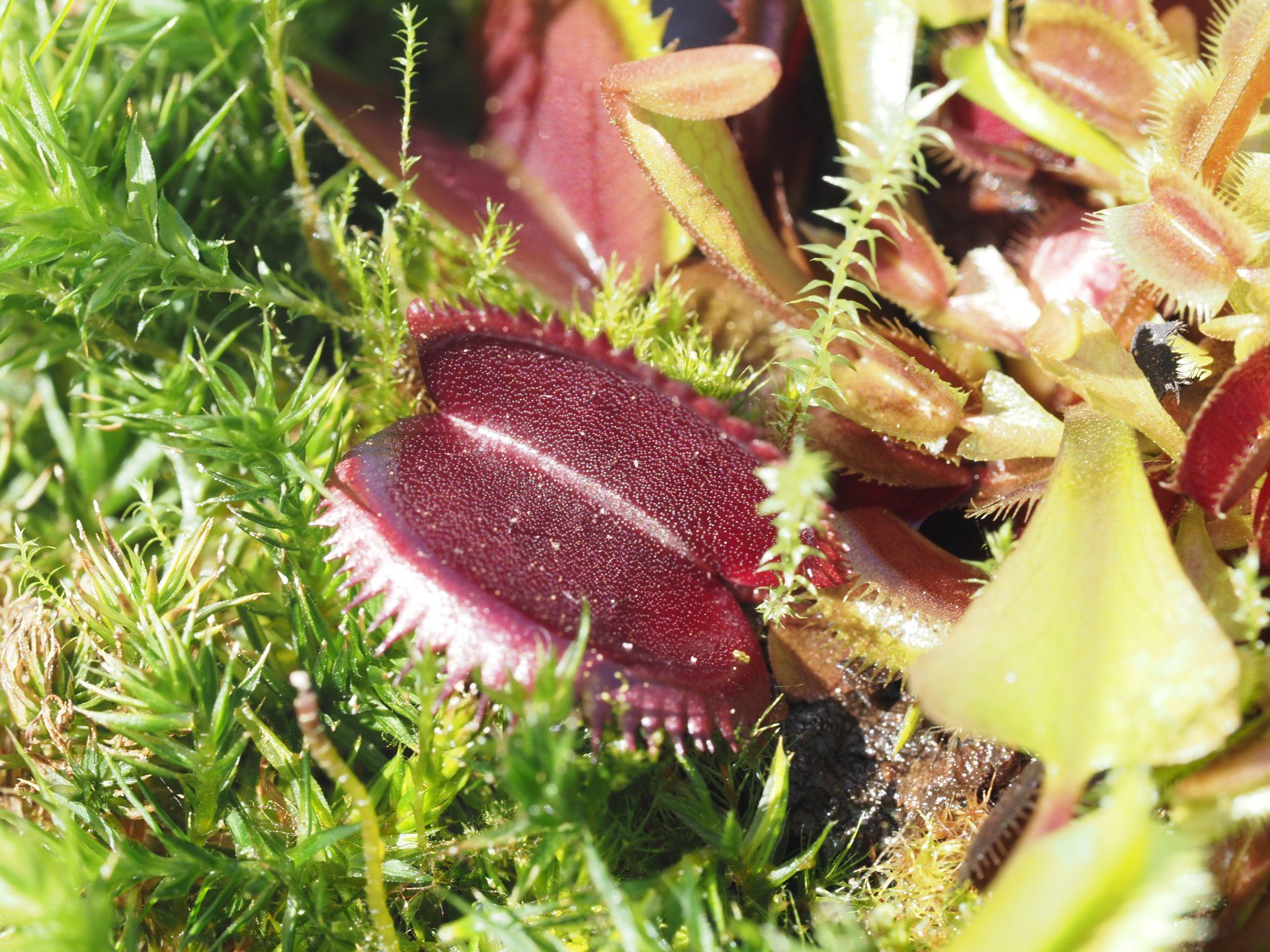
Titel dia
Schrijf uw onderschrift hierKnop
Bladderworts
Less known, but oh so brilliant: Utricularia or bladderwort. Little bladders grow on this water plant, a kind of hollow leaves with a lid in front. There is an underpressure in the vesicle. There are a few sensory hairs on the outside, in front of the lid of the bladder. If an animal touches it, the lid opens, the underpressure is released and the animal is sucked in.
This mean fellow also grows in The Netherlands, for example in nature area "Hatertse vennen" near Nijmegen. More carnivorous plants grow there: you will also find
oblong-leaved and round-leaved sundews (Drosera intermedia and
Drosera rotundifolia). These small plants act like a glue trap. Tip: take a look in the months of June-July-August, when the bladderwort is in bloom: the stems with yellow, orchid-like flowers protrude proudly above the water.
In the video you see a bladder of the bladderwort where an animal is sucked in. It's fast!
Fun fact: in Frisian, bladderwort is fūkjeplant :-)
More horror
Pitcher plants! The Nepenthes family is beautiful, you will encounter the most diverse colors; a delight in the botanical garden. But if you go over the edge as an insect, there is no stopping it: the inside is so smooth that you immediately slide into a deadly pool of enzymes and acids.
Corkscrew plants, such as the Genlisea species and the Sarracenia psittacina, have downward-growing hairs on the inside of their corkscrew-shaped tunnel, so that as a desperate insect you can only go in one direction: that of certain death.
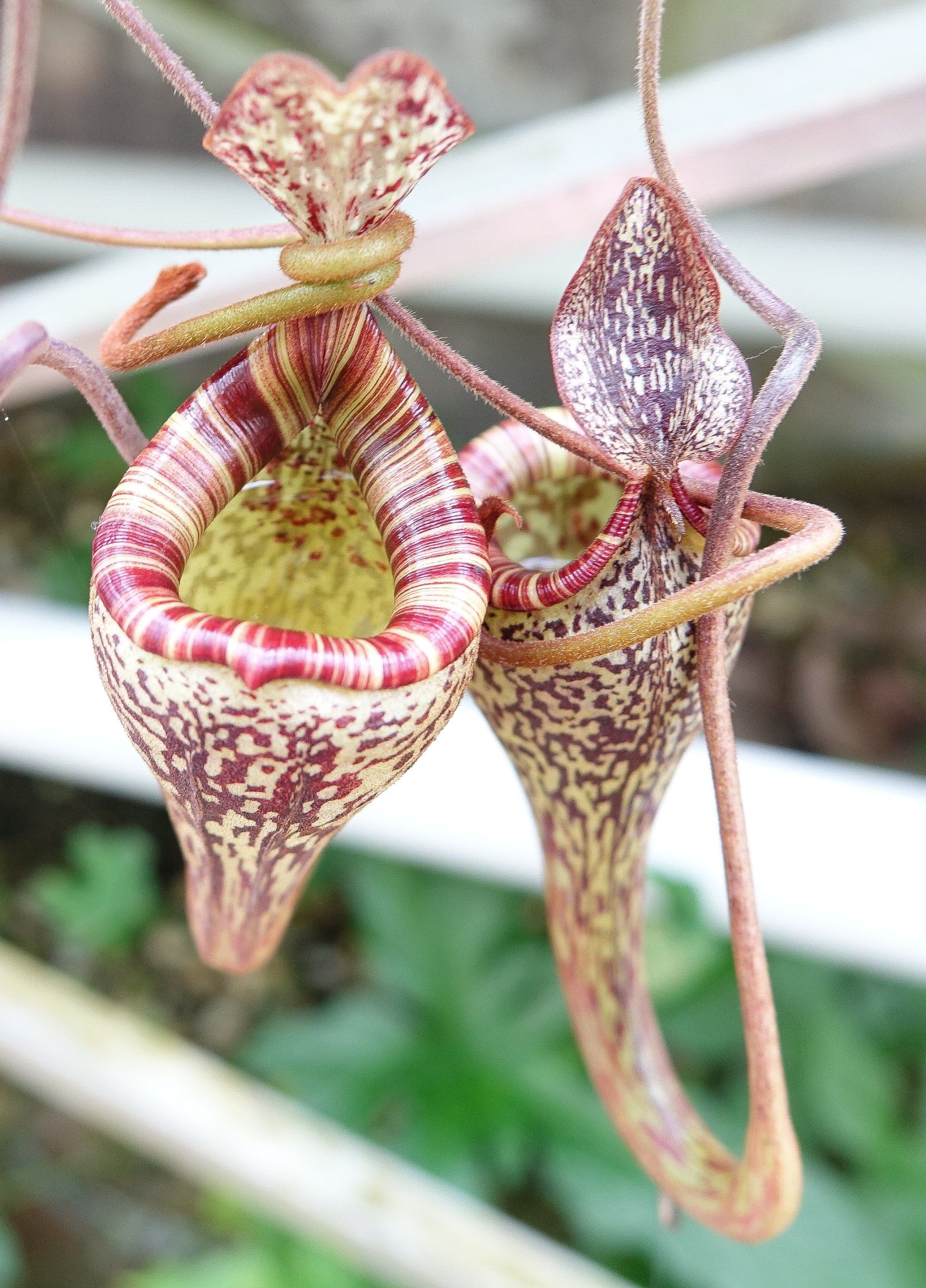
Titel dia
Schrijf uw onderschrift hierKnop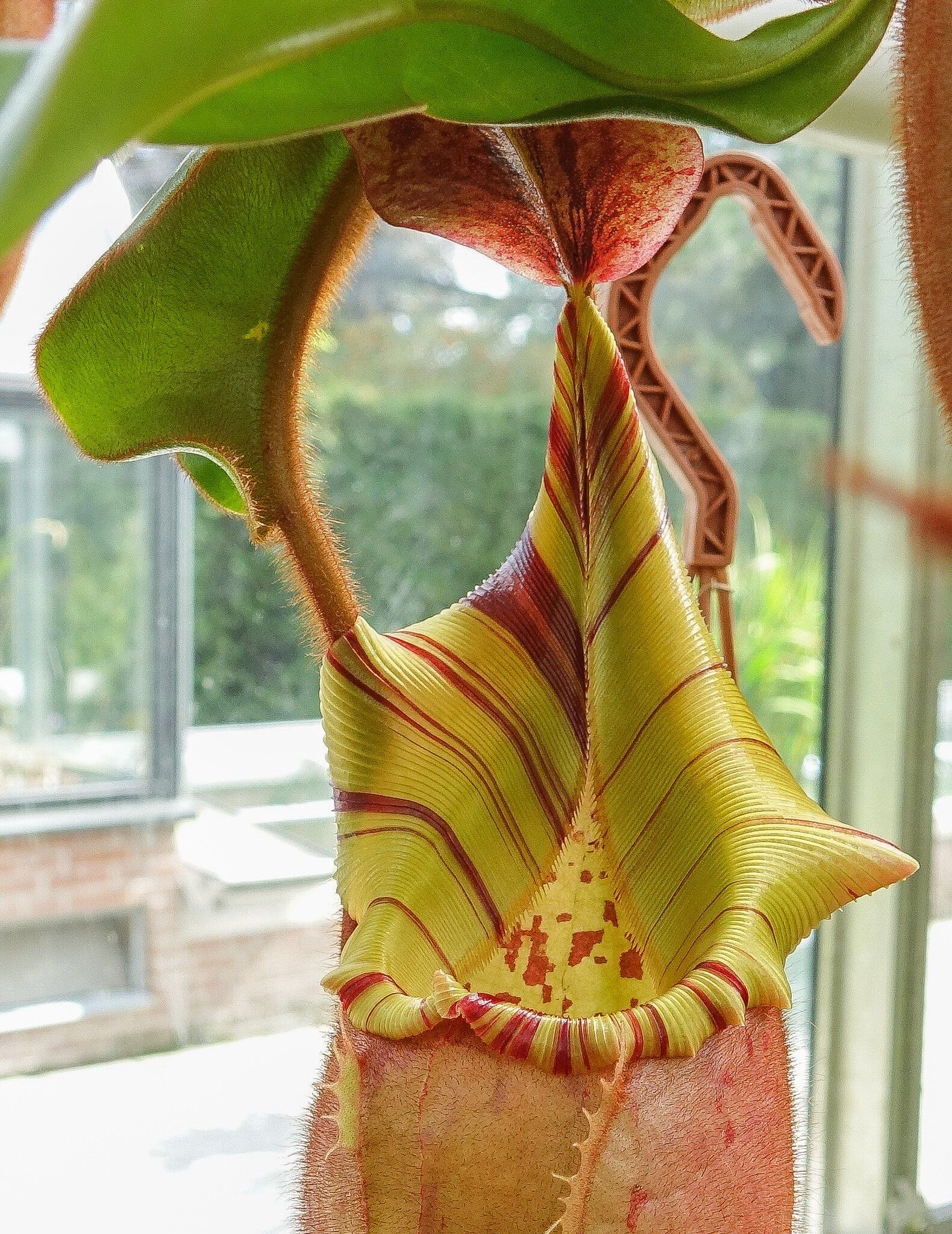
Titel dia
Schrijf uw onderschrift hierKnop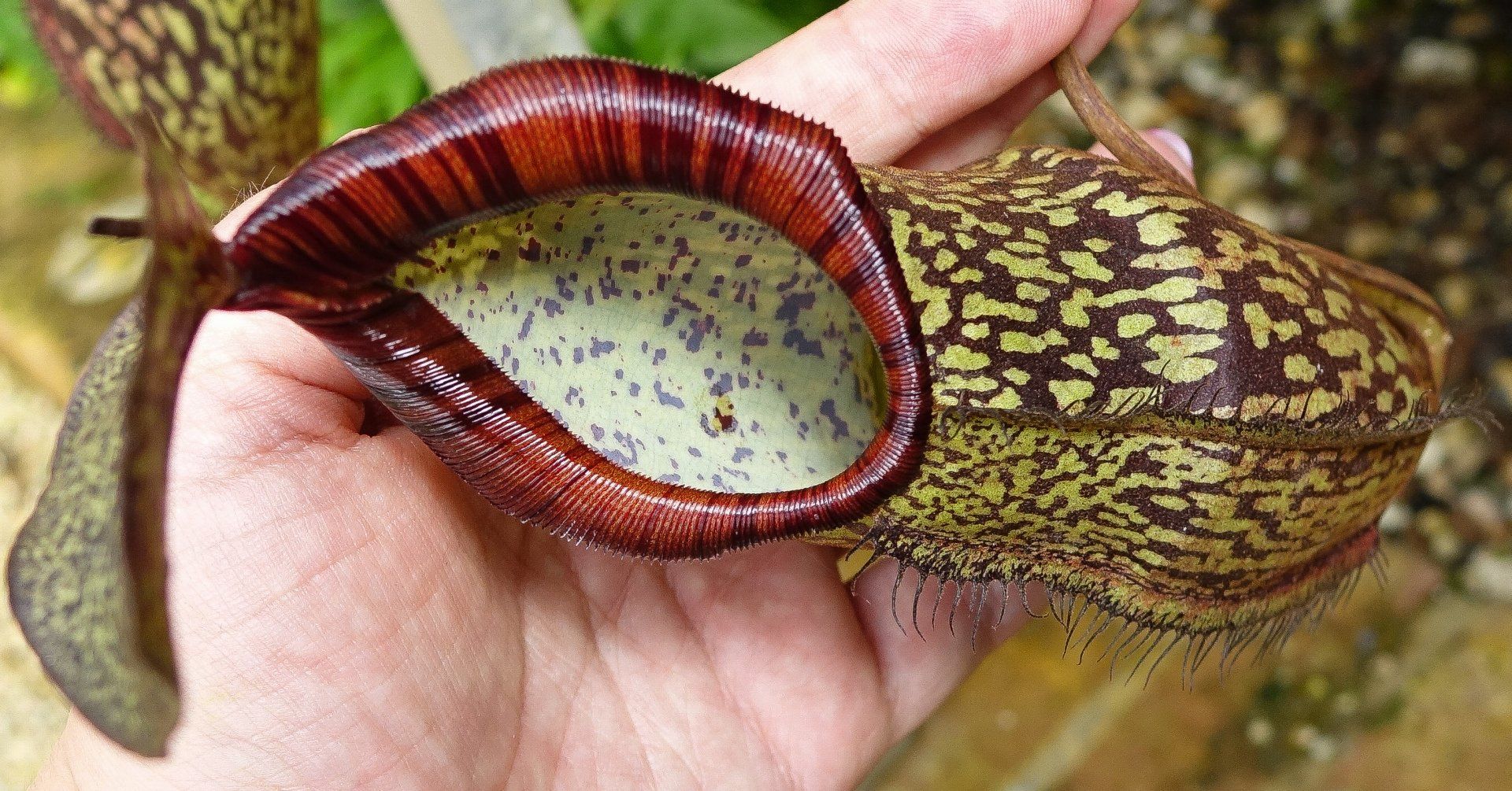
Titel dia
Schrijf uw onderschrift hierKnop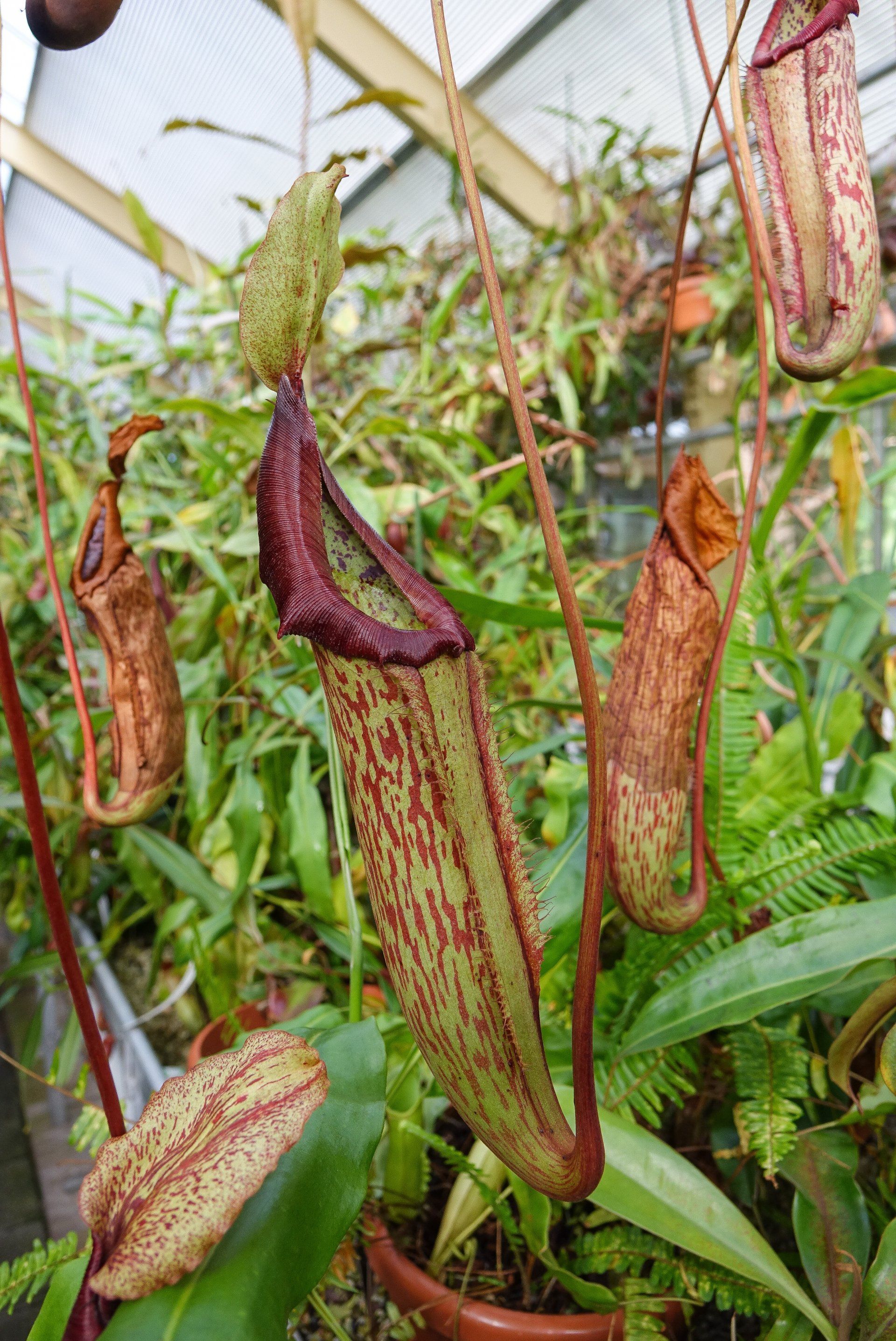
Titel dia
Schrijf uw onderschrift hierKnop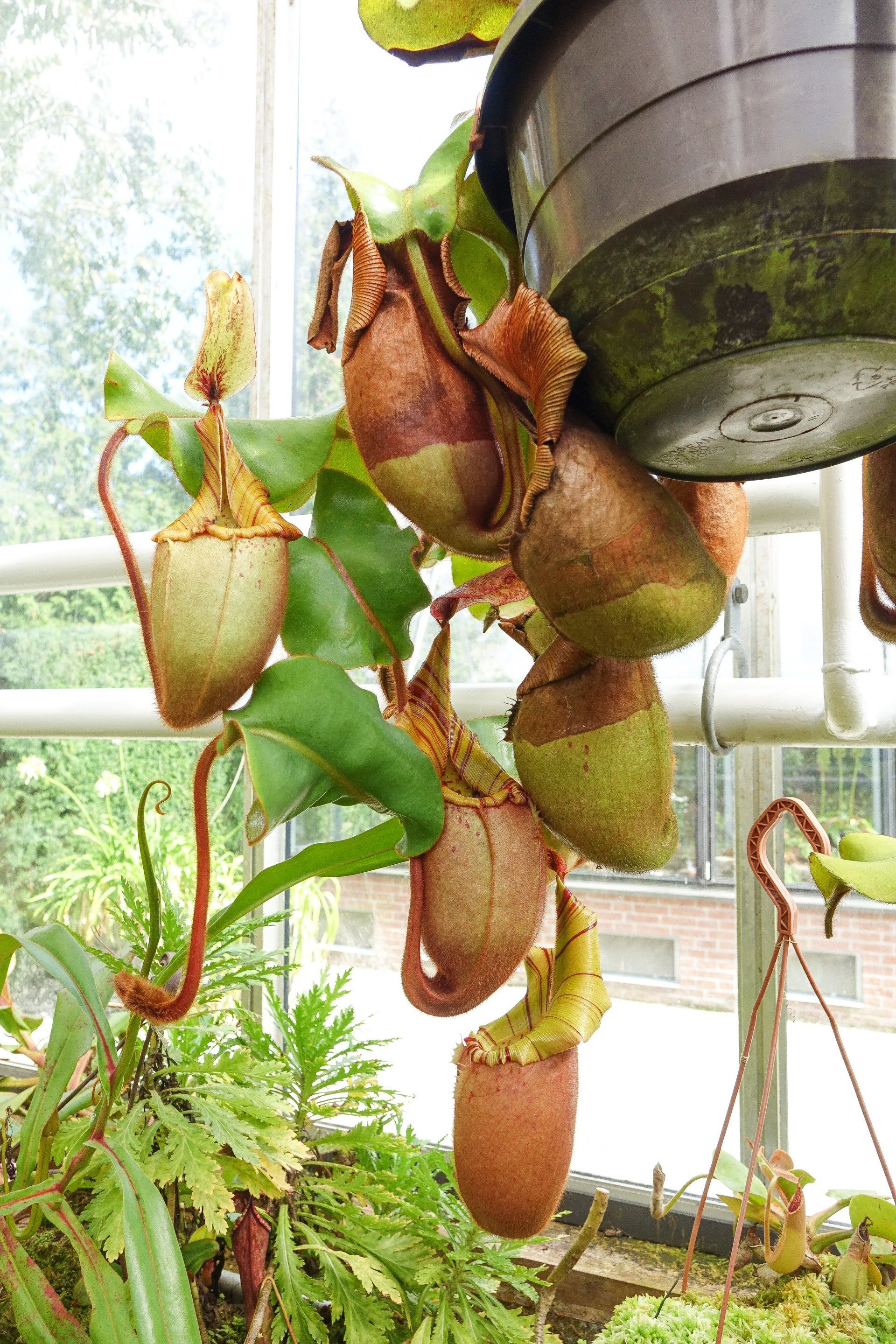
Titel dia
Schrijf uw onderschrift hierKnop
Titel dia
Schrijf uw onderschrift hierKnop
Vegetarian carnivorous plants
This is not a joke, they really exist! But what do they eat? Ripe soybeans? Of course not. An example is Nepenthes ampullaria. These pitcher plants often grow low to the ground, under foliage in a forest. Their "lid" contains fewer nectar glands: insects normally come to the nectar at the bottom of the lid. The lid is also smaller so that leaves fall in more easily. The enzymes at the bottom of the cup are aimed at breaking down plant material.
Several species have recently become a flexitarian. However, the reason is pretty sad. Carnivorous plants usually grow on nutrient-poor soil. They receive their necessary nitrogen and phosphorus via insects. But more nitrogen has entered the soil due to contamination. The plants receive this through the roots, which is of course much easier than catching bugs. This causes them to grow less traps, a glue trap is less sticky or a pitcher will look more like a normal leaf. This sounds like a positive adaptation, but since these flexitarians still spend a lot of energy creating traps instead of normal foliage, other plants always have an advantage over them. So fear is, that complete species will lose out in the long run.
Care
- Reference list
1. francischeefilms, Carnivorous Bladderwort Fastest Plant in the World! 2017, https://www.youtube.com/watch?v=wZcKoTxp5mc.
2. Hedrich, R. and E. Neher, Venus Flytrap: How an Excitable, Carnivorous Plant Works. Trends in Plant Science, 2018. 23(3): p. 220-234.
3. Koller-Peroutka, M., et al., Capture of algae promotes growth and propagation in aquatic Utricularia. Annals of Botany, 2014. 115(2): p. 227-236.
4. Millett, J., et al., Reliance on prey-derived nitrogen by the carnivorous plant Drosera rotundifolia decreases with increasing nitrogen deposition. New Phytologist, 2012. 195(1): p. 182-188.
5. Moran, J.A., C.M. Clarke, and B.J. Hawkins, From carnivore to detritivore? Isotopic evidence for leaf litter utilization by the tropical pitcher plant Nepenthes ampullaria. International Journal of Plant Sciences, 2003. 164(4): p. 635-639.
6. Pavlovic, A., L. Slovakova, and J. Santrucek, Nutritional benefit from leaf litter utilization in the pitcher plant Nepenthes ampullaria. Plant Cell and Environment, 2011. 34(11): p. 1865-1873.
7. Ueda, M. and Y. Nakamura, Metabolites involved in plant movement and 'memory': nyctinasty of legumes and trap movement in the Venus flytrap. Natural Product Reports, 2006. 23(4): p. 548-557.
8. CarnivorousPlantResource. [cited 2020 Sep 20]; Available from: https://carnivorousplantresource.com/the-plants/nepenthes-ampullaria/.
9. Doorn, N.v. Vleesetende planten zijn hongerige vegetariërs. 2010 [cited 2020 Sep 20]; Available from: https://www.trouw.nl/nieuws/vleesetende-planten-zijn-hongerige-vegetariers~b9acf8c1/.
10. FloraVanNederland. [cited 2020 Sep 26]; Available from: https://www.floravannederland.nl/planten/loos_blaasjeskruid/.
